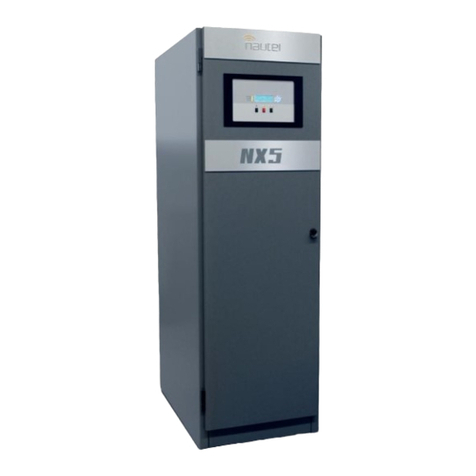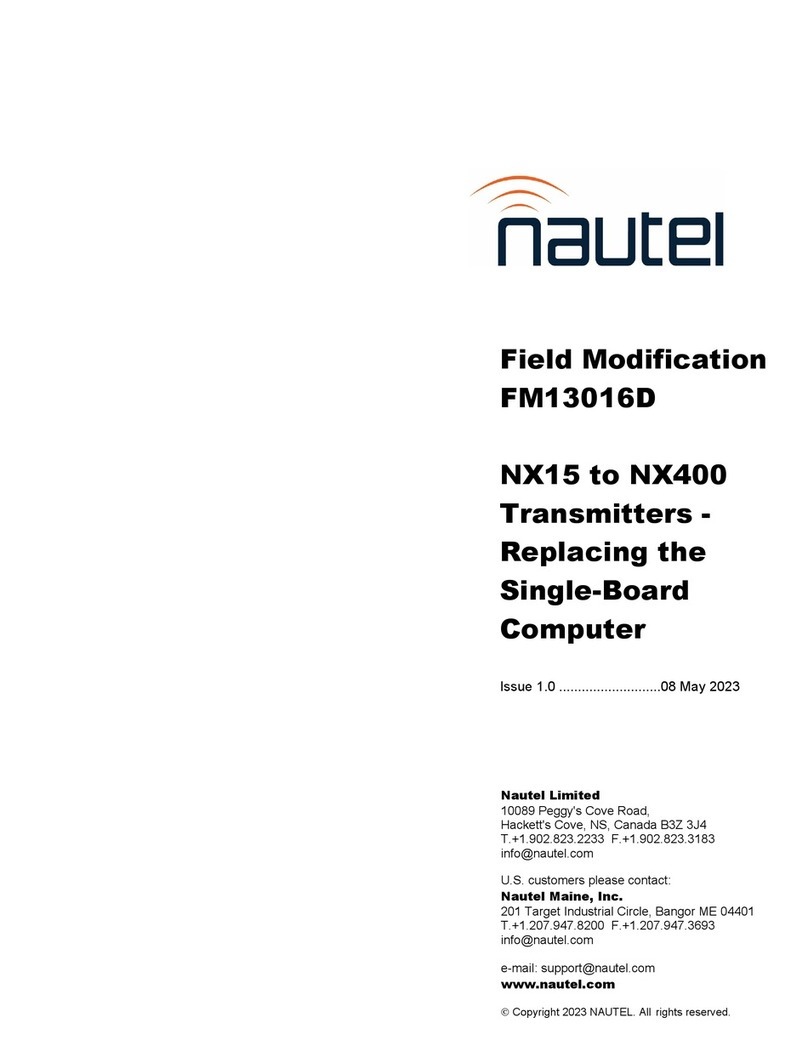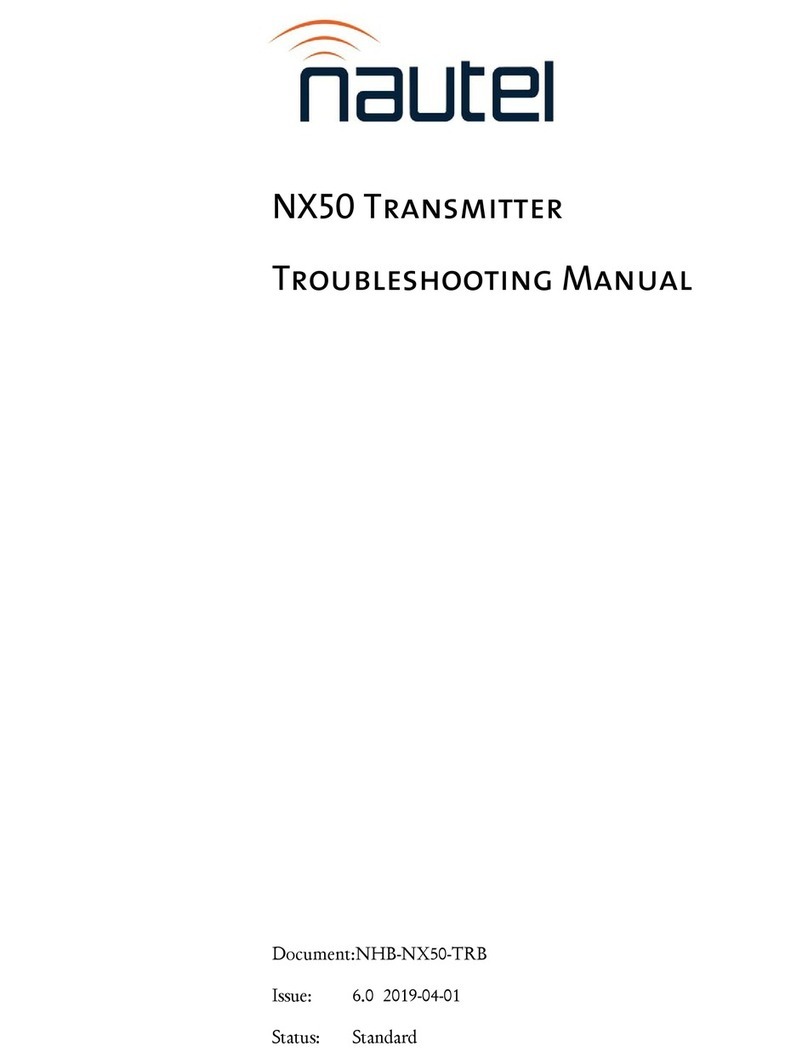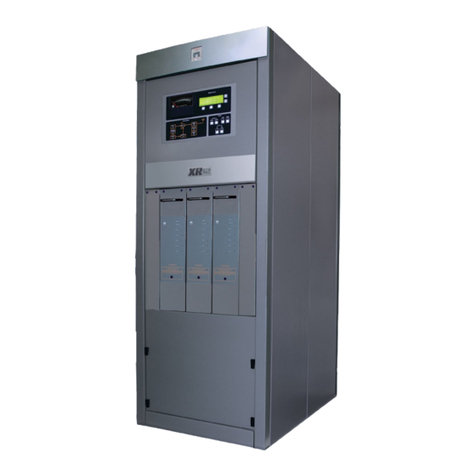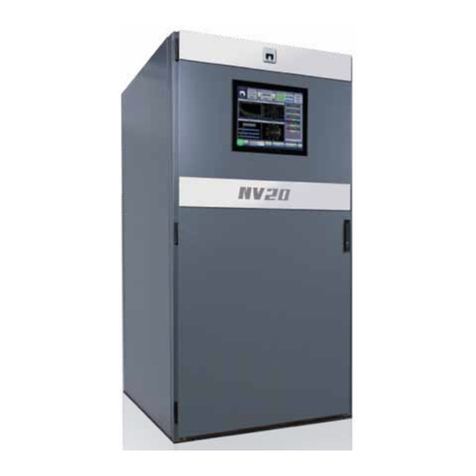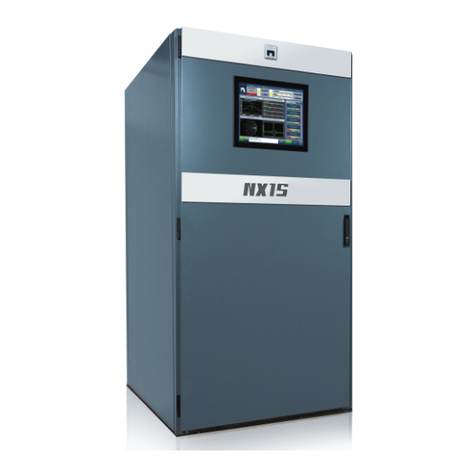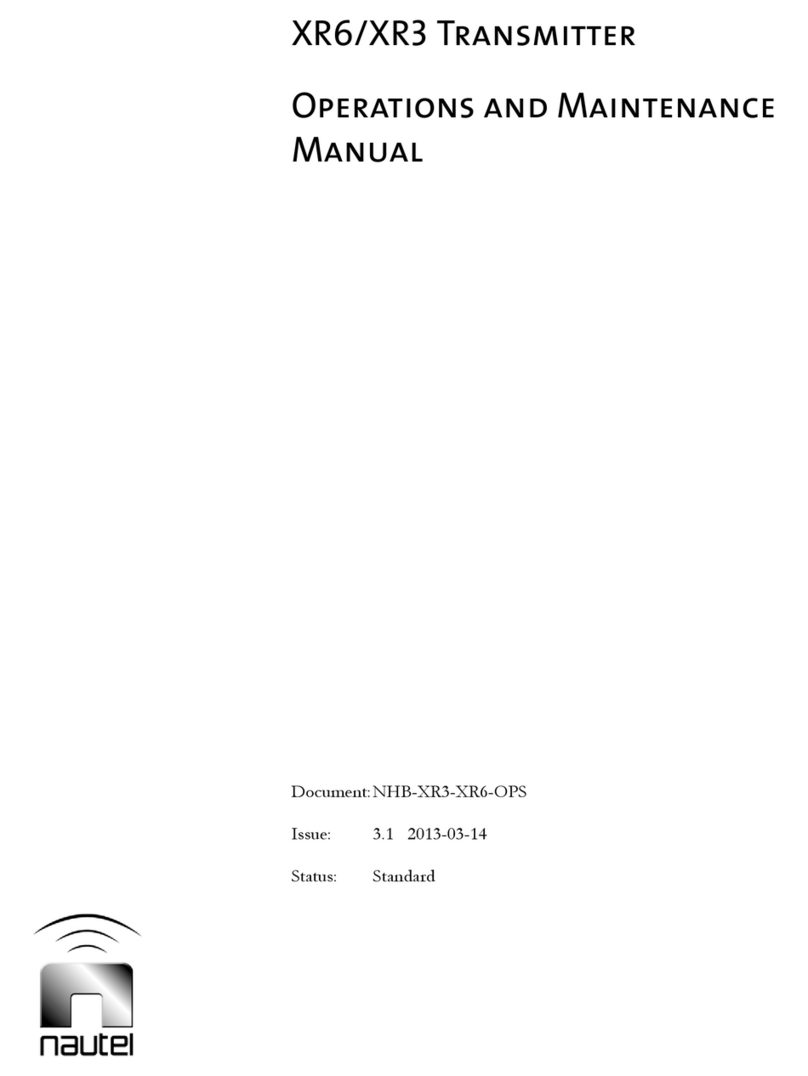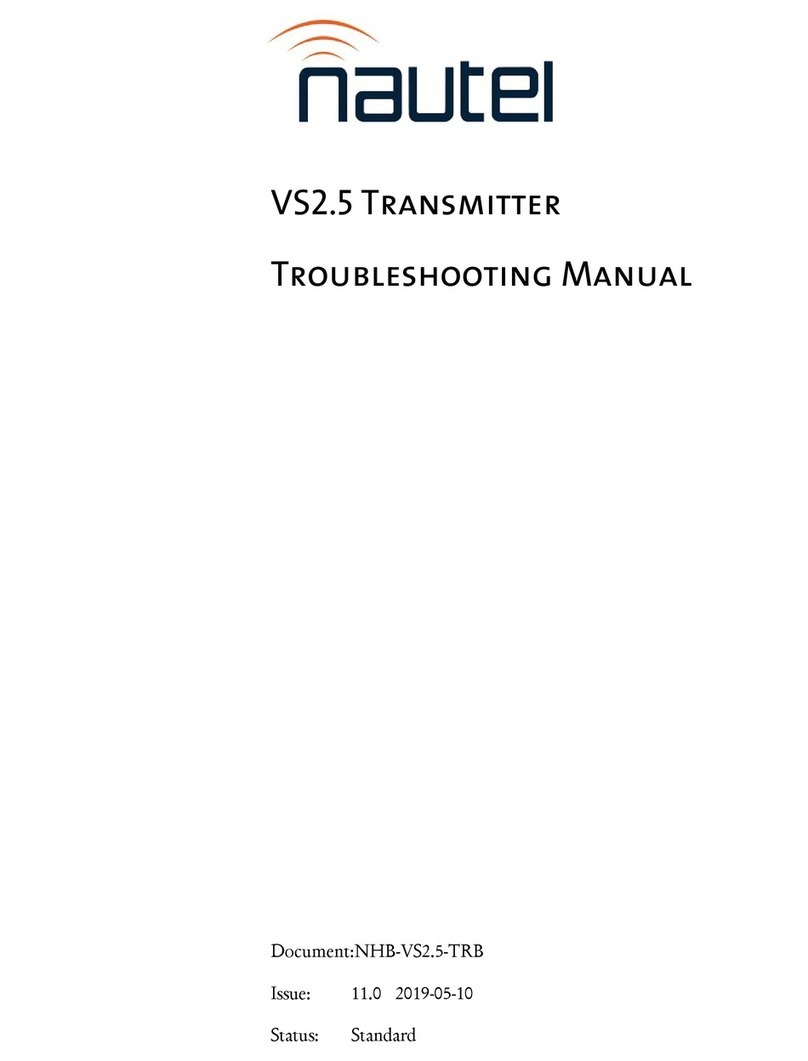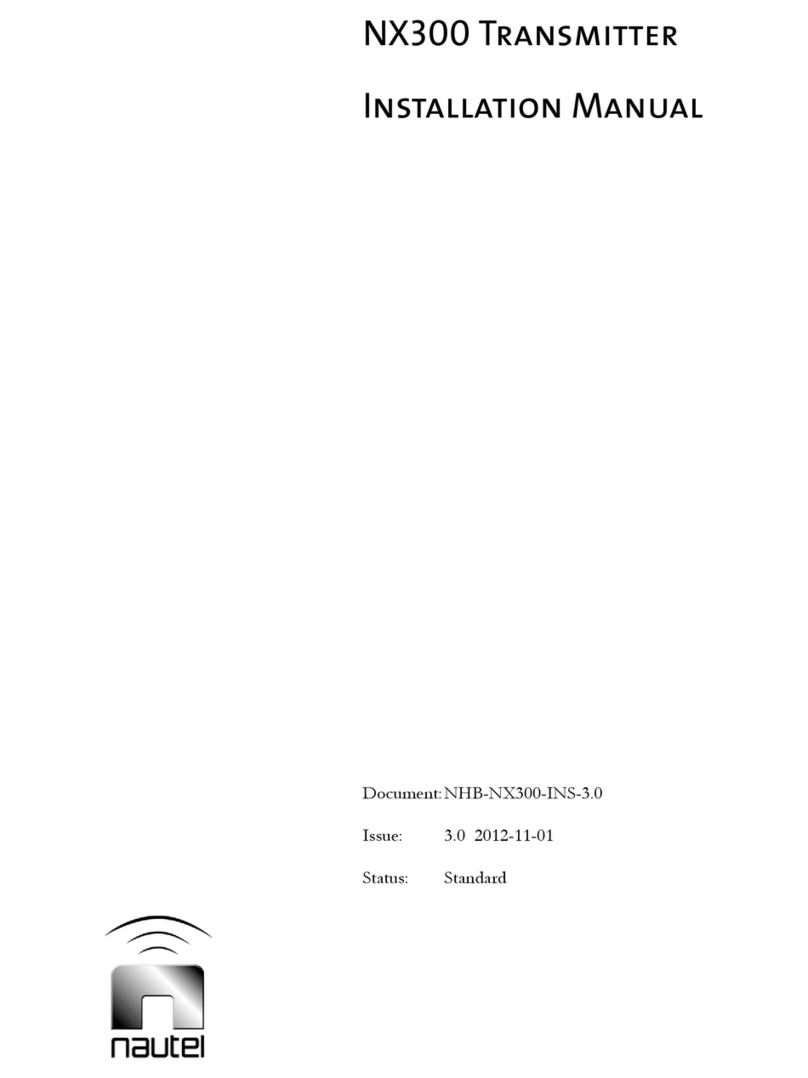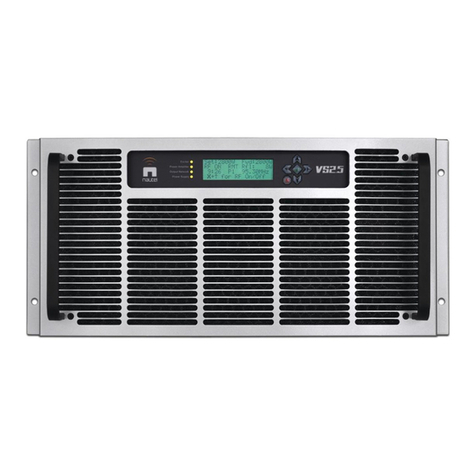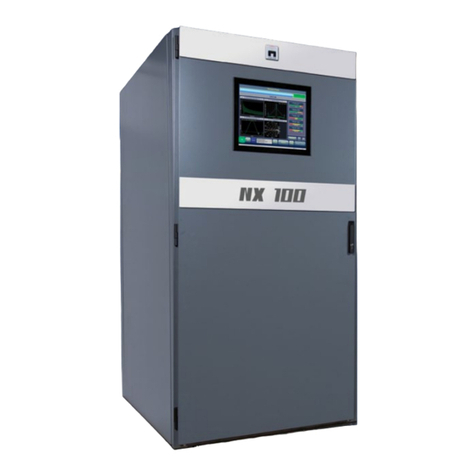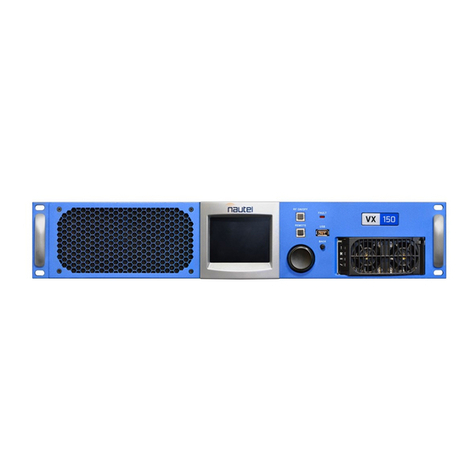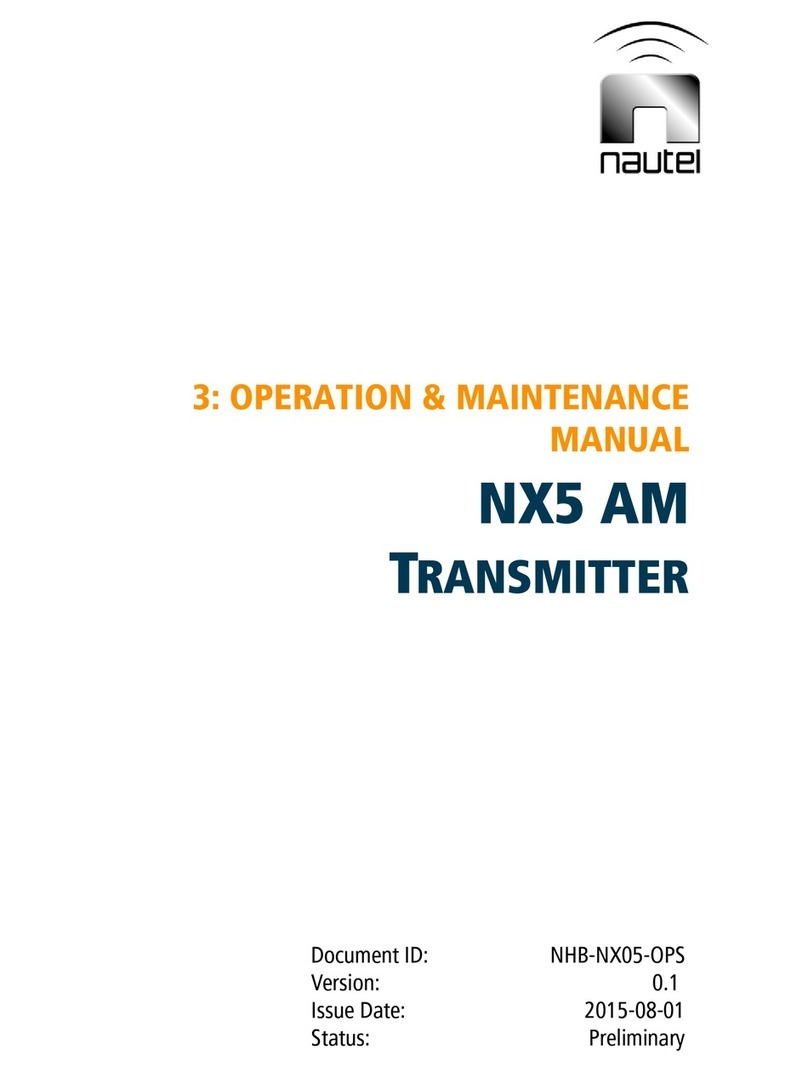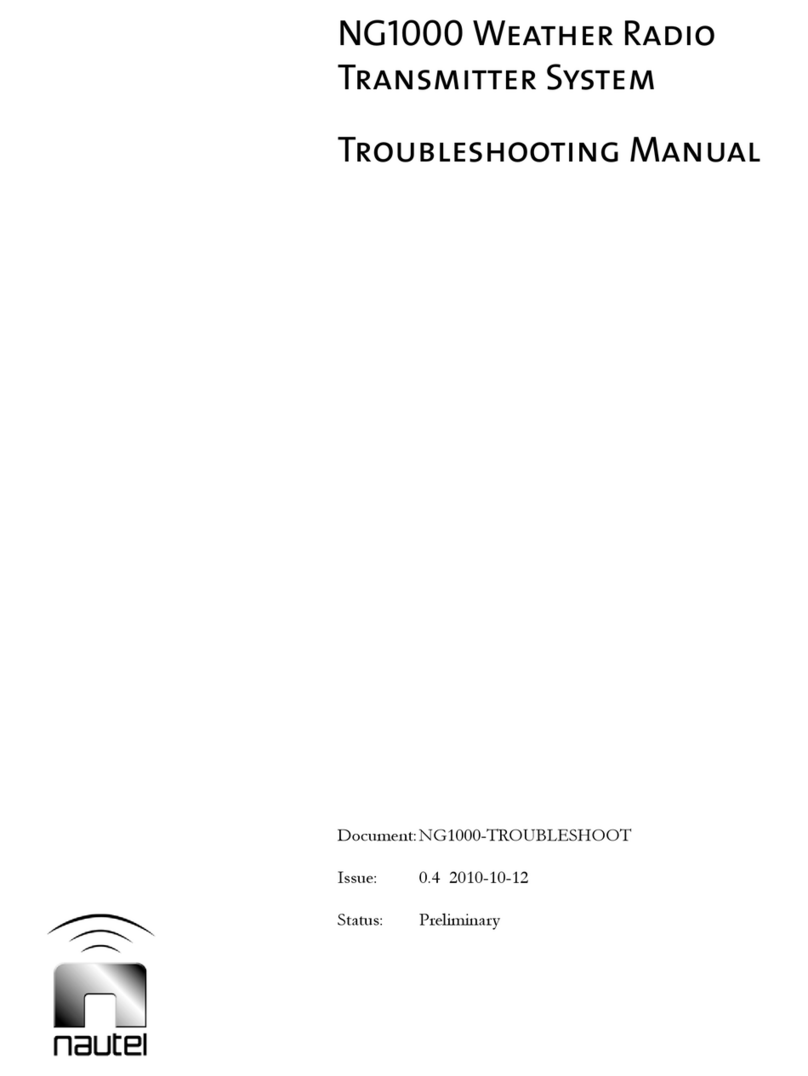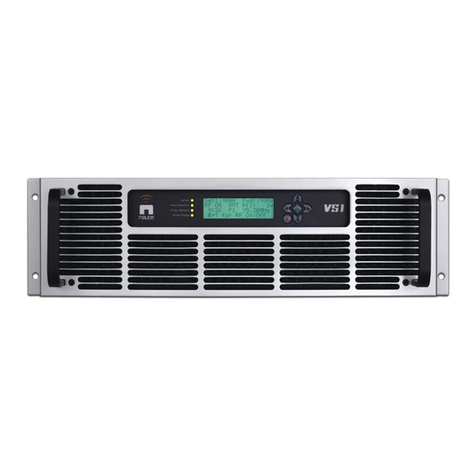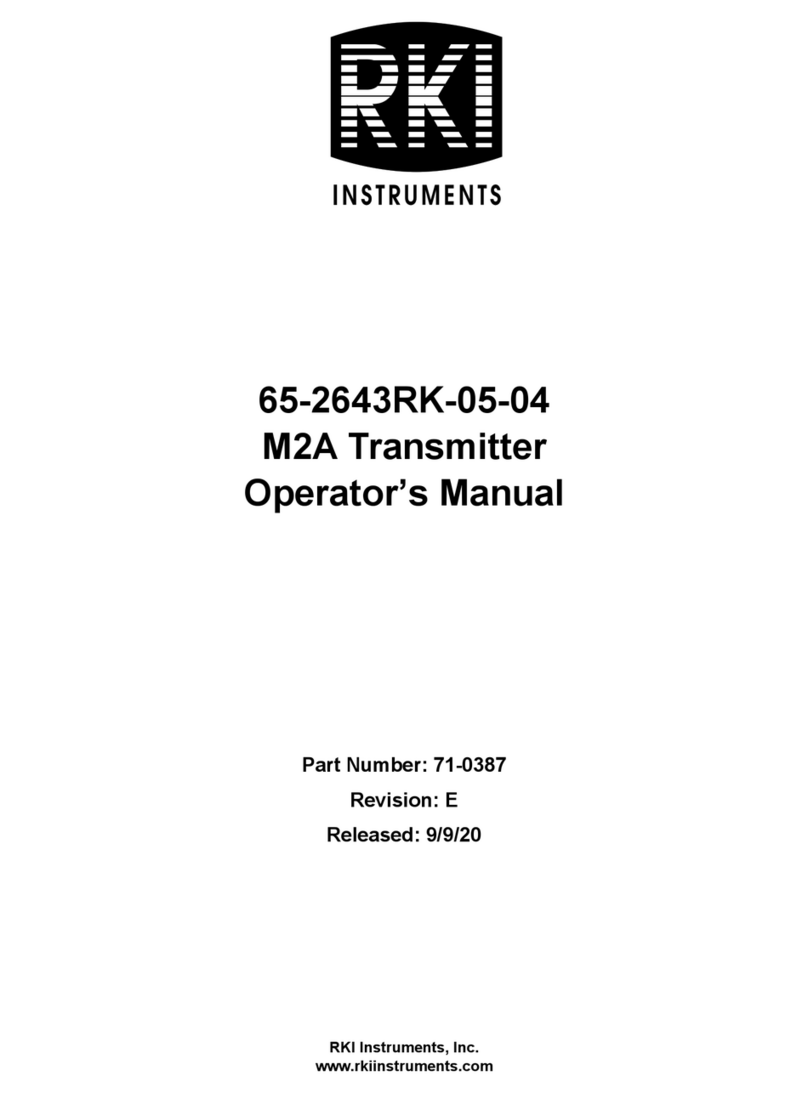
VX150 TO VX2 OPERATIONS & MAINTENANCE MANUAL DESCRIPTION
PAGE 2.1.2 VERSION 1.0 2022-12-08
provides RS485 serial communication between the System Interface PWB and the +53V PA
Power Supply.
provides status and alarm outputs from the PA Power Supply, such as Module Present, Power
Fail Warning, Rectifier Fault and Overtemp Warning (provided to the System Interface PWB
over a serial bus).
+12 V Power Supply
The +12 V Power Supply (U2) converts the ac input voltage to the regulated output (+12 V dc). This
voltage is used to power all the PWBs, the cooling fans and the IPA.
PA Power Supply
The PA Power Supply (U3) converts the ac input voltage to a regulated dc supply (PA volts) for the RF
amplifier(s). The PA Power Supply, and its output voltage range, varies with the transmitter model. For
VX150 to VX600 transmitters, the output voltage range is between +18 and 53 V dc. For VX1 to VX2
transmitters, the output voltage range is between +23 and 65 V dc. The output voltage is regulated
based on a serial control input from the Power Supply Interface PWB (A4). The PA Power Supply also
senses out-of-regulation on the ac input and dc output, and applies a Power Fail Warning signal to the
Exciter PWB. Both conditions cause the PA Power Supply to shut itself down, thus shutting down the
transmitter's RF output. Some PA Power Supply signals are applied to the Exciter PWB, via the System
Interface PWB, for system level monitoring.
Control/Excitation/Monitor Stage
The control/excitation/monitor stage performs many critical functions for the transmitter. The primary
components of the control/excitation/monitor stage are the Exciter PWB (A1), Analog Audio PWB (A2),
System Interface PWB (A3), Power Supply Interface PWB (A4), and front panel user interface (FPUI). The
FPUI consists of the Display Module (U1) and the Front Panel User Interface PWB (A5).
The Front Panel User Interface PWB uses a rotary pushbutton to navigate through the various FPUI
menus. The front panel has a pushbutton switch (BACK) to allow the user to return to the previous
menu. There are two front panel LEDs that display the status for remote (enable) ON or OFF and RF ON
or OFF.
The Exciter PWB (A1) provides all the user remote I/O (input/output) interfacing for the transmitter. An
AUI (advanced user interface) can be remotely accessed, which contains a menu-based series of pages
that serve specific functions.
An SD card (U4) provides a storage medium that has the operating system (OS) for the transmitter and
stores the presets and calibration data.
